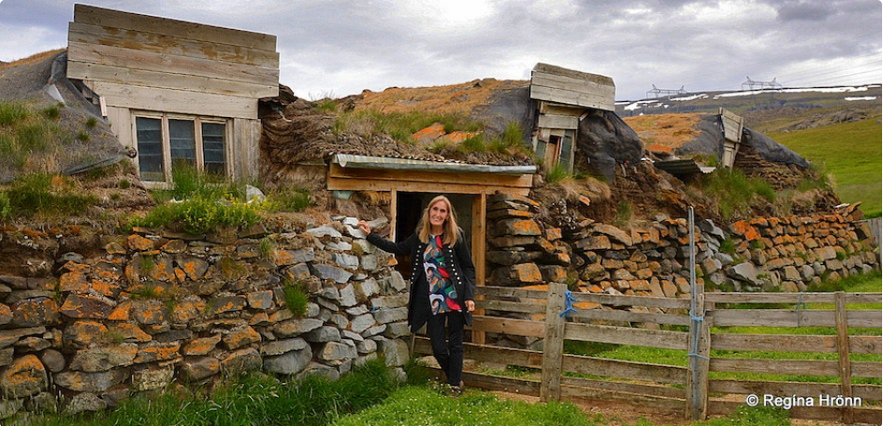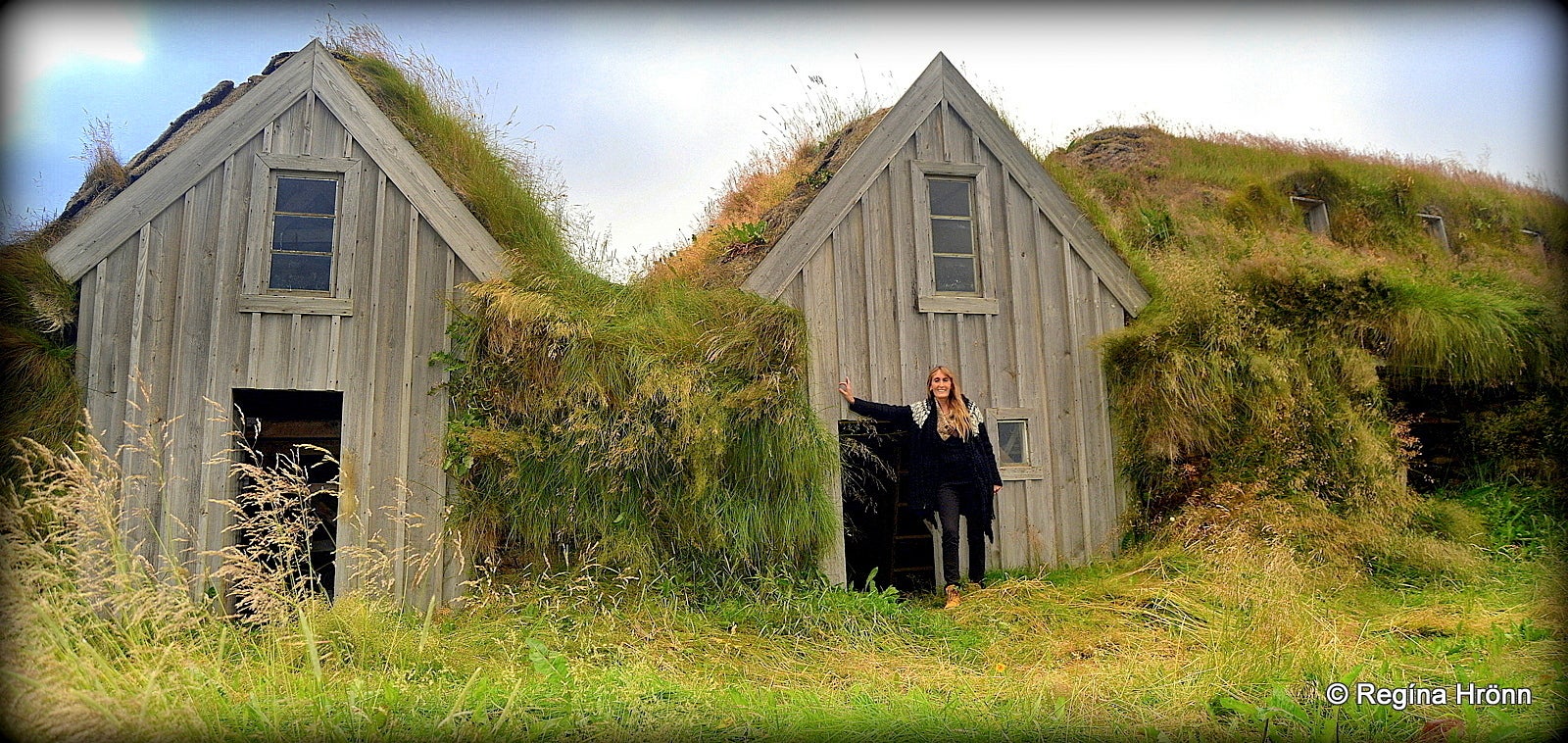
Galtastaðir-fram and other traditional Turfhouses in East Iceland


In many of my travel-blogs I have shown you what the turf houses in Iceland look like, and in this travel-blog I want to show you what the turf houses in East Iceland look like. There are a couple of turf houses and outhouses left in East Iceland that give us an idea of what turf houses in this part of Iceland were like in the olden days.
Top photo: Galtastaðir-fram turf house in East Iceland
Bustarfell turf house
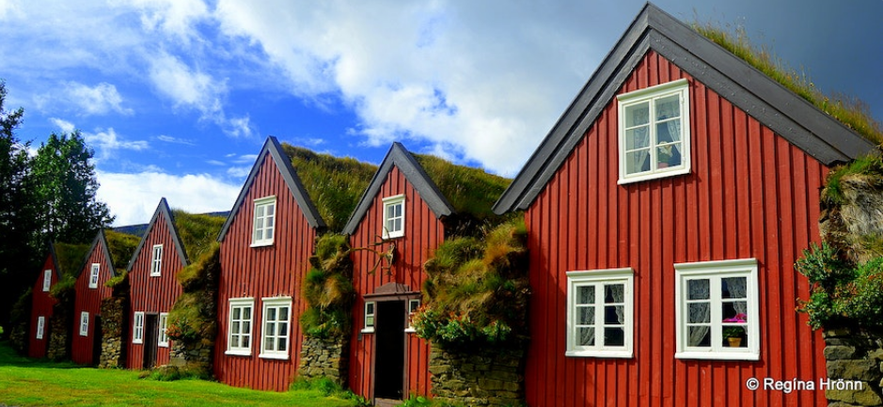
These habitations of past generations of Iceland are of great interest to me - everybody lived in a turf house and my maternal grandmother was born in a turf house in a remote valley in the Westfjords.
The turf houses need constant upkeep as they are made of turf and rocks, so we are grateful for the few turf houses which are left in Iceland, as it is not easy maintaining them.
The best-known turf house in East Iceland is Bustarfell turf house, which is now open as a museum.
People lived in the turf houses at Bustarfell from 1770-1966, and the same family has lived here at Bustarfell since 1532.
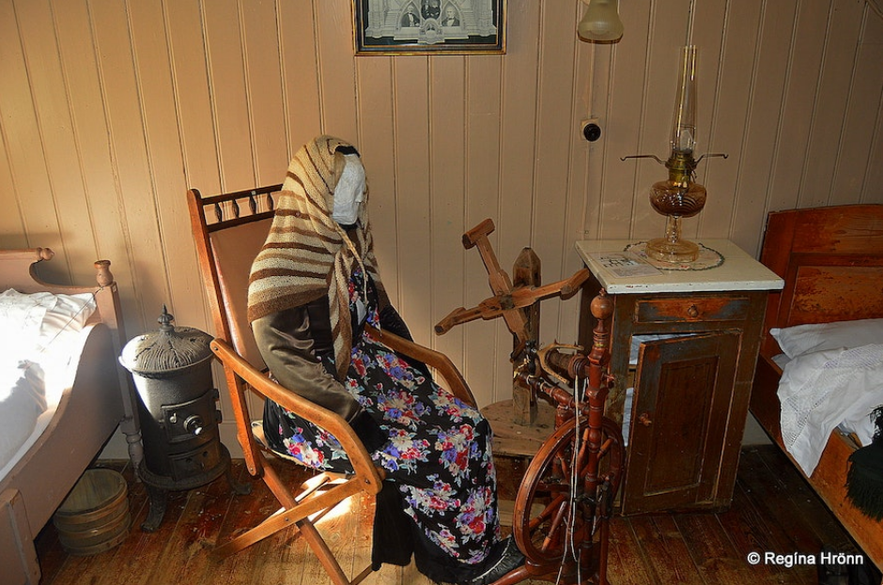
Bustarfell was a stately manor, much like Grenjaðarstaður turf farm in North Iceland, which is also a museum now. Bustarfell turf house is the only one of the remaining big turf houses which is red in colour.
I have written about the lovely red turf farm in another travel-blog: the beautiful Bustarfell turf house by Vopnafjörður.
There is folklore about elves connected to a large rock on this land: the Sheriff's Wife and the Elf-Woman in labour - Icelandic folklore.
Lindarbakki turf house
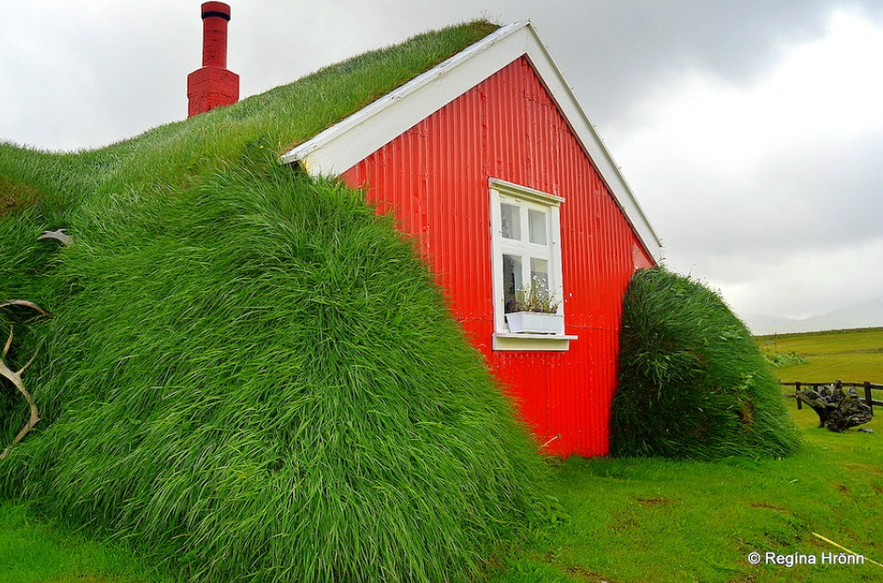
You will find another red-painted turf house in East Iceland, the very small privately owned turf house Lindarbakki in Bakkagerði in Borgarfjörður-Eystri.
Lindarbakki turf house is one of the landmarks of this little village, Bakkagerði, and a very popular photo motive.
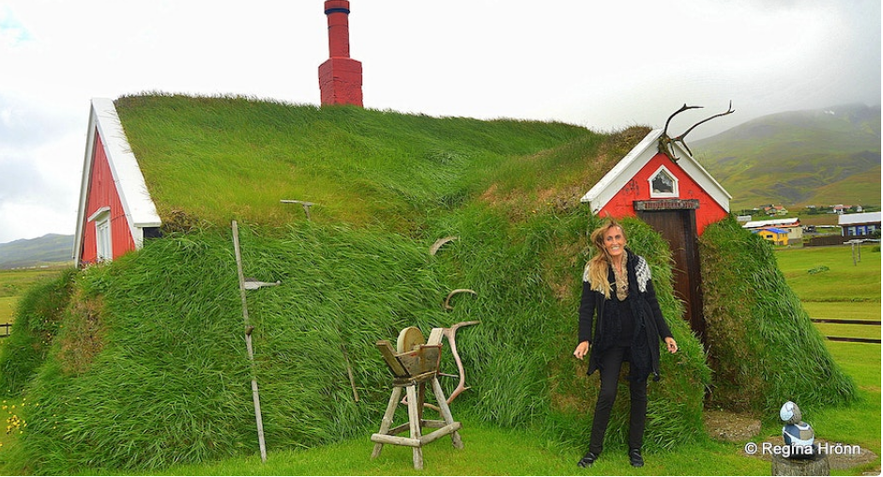
The oldest part of Lindarbakki turf house dates back to 1899, and some of the woodwork is from around 1934.
The last I knew then this cute little turf house was still inhabited in the summertime. Elísabet Sveinsdóttir (1929) used it as a summerhouse and once when visiting Bakkagerði she invited us to have a look inside.
I have written another travel-blog about Lindarbakki: Lindarbakki Turf House in Borgarfjörður-Eystri in East Iceland.
Galtastaðir-fram
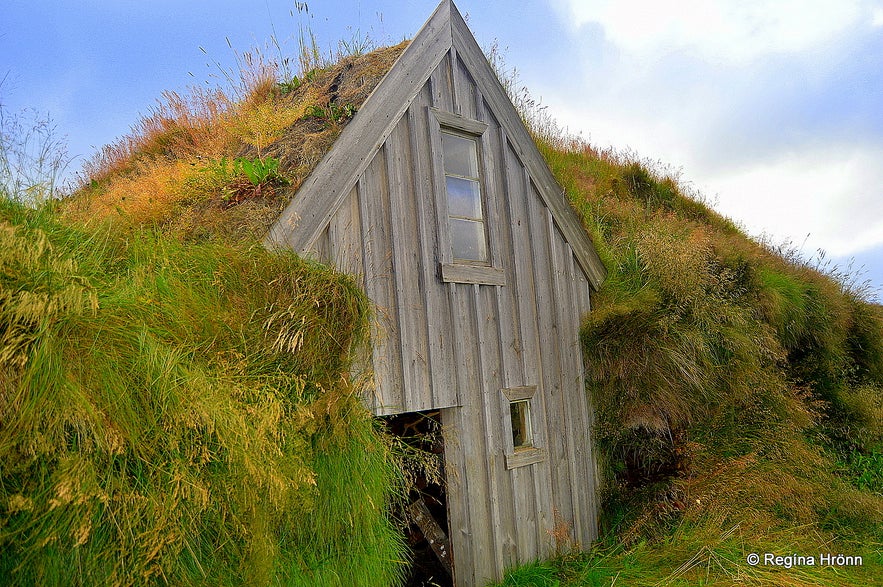 Galtastaðir-fram
Galtastaðir-fram
There is an old turf farm in East Iceland that most people don't know about as it is off the beaten path and closed to visitors.
It is called Galtastaðir-fram in Hróarstunga - sometimes also called Galtastaðir-fremri. The "fram" or "fremri" part of the name means the foremost of two, just in case you thought that I misspelled the word farm :)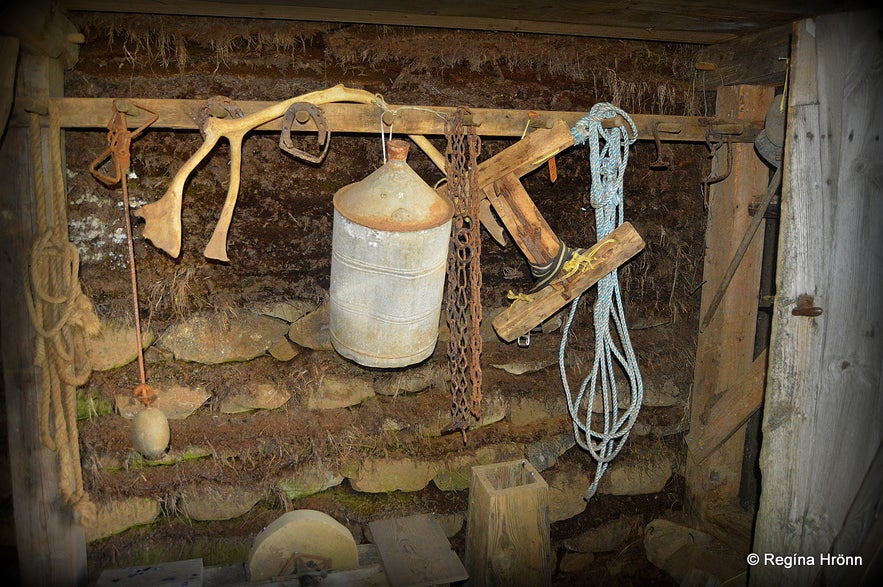
Inside Galtastaðir-fram
Galtastaðir-fram is not open to visitors, so I was reluctant to write about it, but I was given permission many years ago to write about this turf farm here on Guide to Iceland, with the warning though that it is closed to visitors.
I deleted this travel-blog a couple of years ago, as I didn't want to draw attention to it, but now I see that the official travel website for East Iceland mentions it so I decided on reposting it and added a short description of the other turf houses in East Iceland to this travel blog.
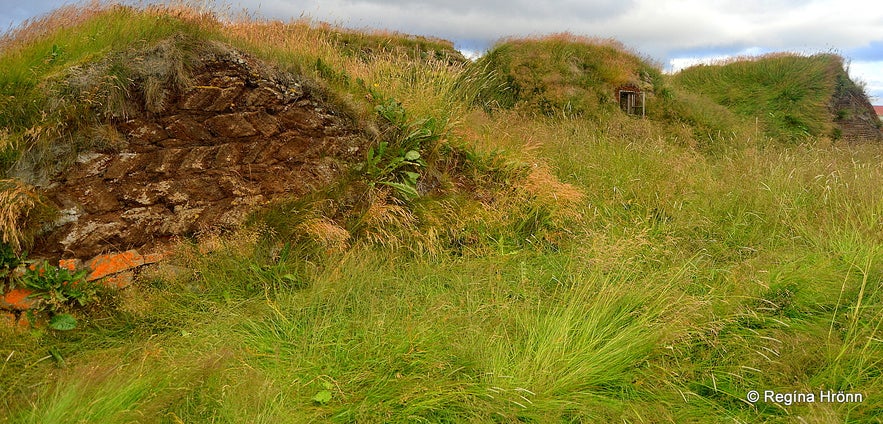 Galtastaðir-fram
Galtastaðir-fram
When I visited Galtastaðir-fram back in 2014 it was empty, with no furniture, etc. It was being renovated, but that job came to a halt as there was a lack of funding for finishing the job.
A new house was built adjacent to the turf farm in 1960, but the old farm was inhabited until 1967. This was common as at both Þverá turf farm and Bustarfell turf farm modern houses were built by the turf farm in 1960.
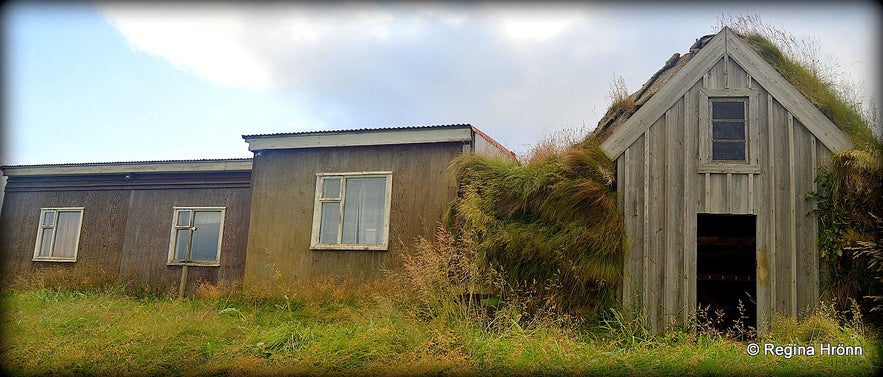 The new farm and the old farm at Galtastaðir-fram - it was dark and gloomy during our visit
The new farm and the old farm at Galtastaðir-fram - it was dark and gloomy during our visit
Unlike many of the other turf houses I have written about then Galtastaðir-fram was not a manor, but a modest farm, where poorer people lived.
It is not known when exactly the turf house was built, but it is from the latter part of the 19th century.
Galtastaðir-fram is different from other turf houses I have visited and in 1882 a cowshed was built on the ground floor and the communal living room above it so the warmth from the cows would heat up the communal living room (baðstofa).
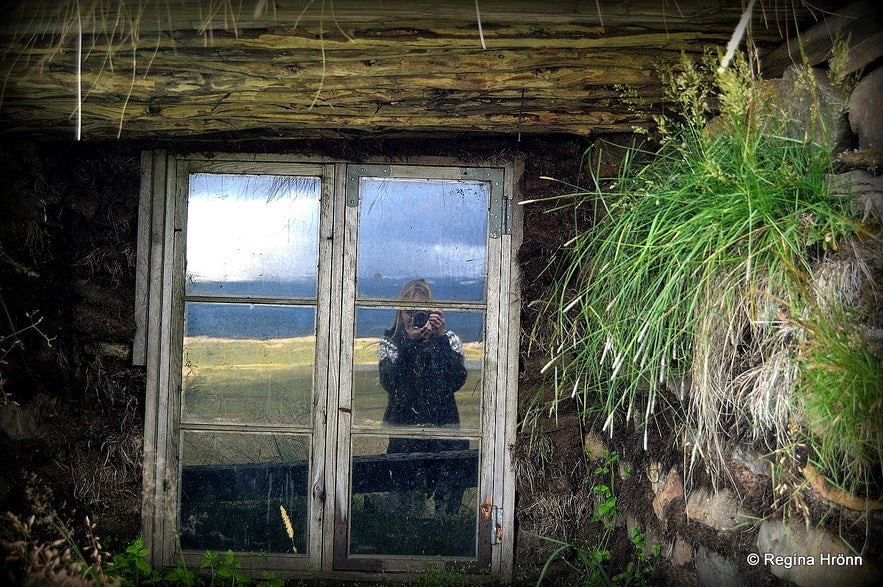
One of the windows of Galtastaðir-fram
This type of turf house is called "Galtastaðagerð" (fornugerð). Galtastaðir-fram has a "fjósbaðstofa" a so-called byre-dwelling.
The communal living room faces sideways to the main pathway, instead of facing the same way as the other turf houses, which is the more usual turf house type. (Ref. Þjóðminjasafnið).
In this communal living room, people would both sleep, eat and do their handiwork.
All of the major turf houses in Iceland are a part of the National Museum's Historic Buildings Collection and they are on the UNESCO list.
Galtastaðir-fram turf house has belonged to Þjóðminjasafn Íslands - the National Museum of Iceland since 1976.
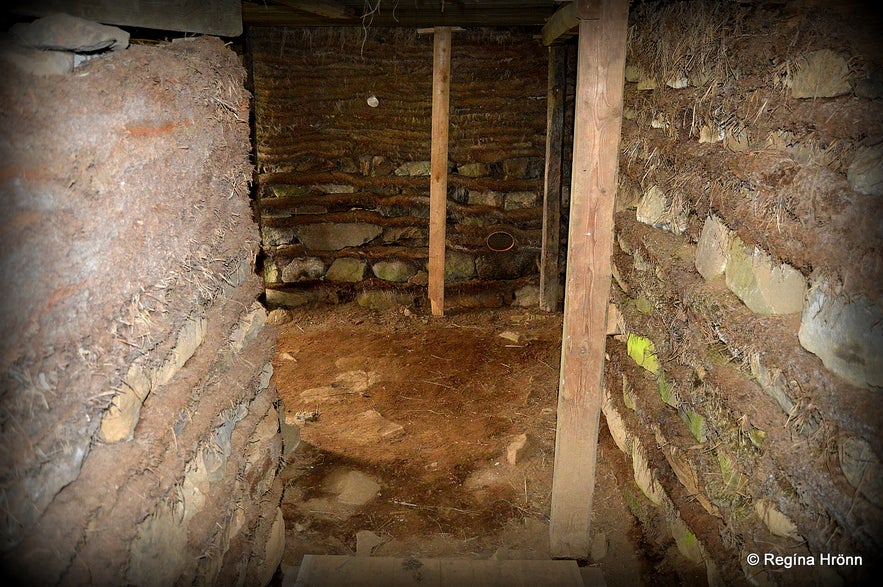 Inside Galtastaðir-fram
Inside Galtastaðir-fram
Folklore is linked to the farm. There are monoliths in Lake Álftavatn close to the farm called Gullsteinar or the Golden rocks.
The story goes that the settler Galti at Galtastaðir, who was a wealthy man, had 2 chests filled with gold. As he wanted to ensure that nobody would get his gold after his death, he lowered them deep into Lake Álftavatn and put a rock on top of them.
And he put a spell on the chests - if anybody were to touch them the farm at Galtastaðir would burn down. Galti was then buried under his ship and his burial mound which was in the shape of a ship is south of the farm.
Once some men tried to get his gold but had to stop as the farm looked like it was on fire. This is a well-known Icelandic saga motif.
The folklore is told in Galti og gullkisturnar in Íslenskar þjóðsögur og sagnir by Sigfús Sigfússon.
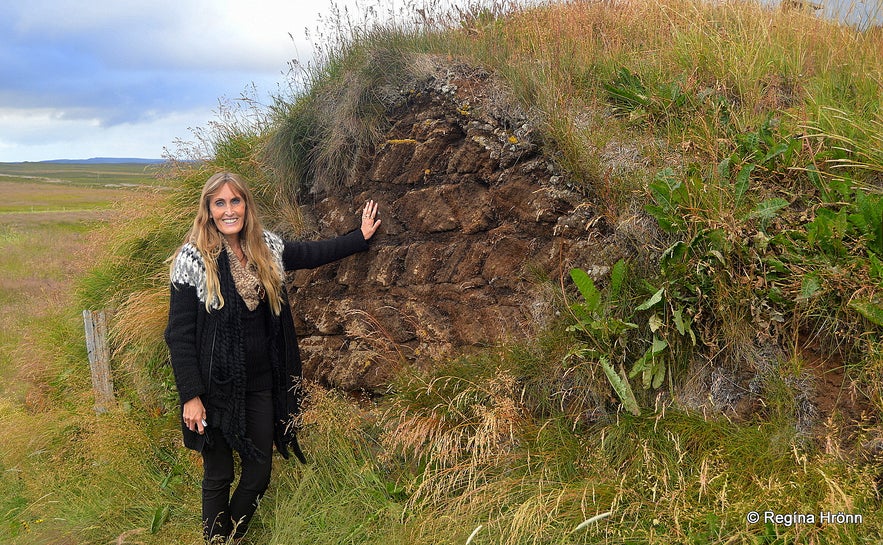 Traditional building methods at Galtastaðir-fram
Traditional building methods at Galtastaðir-fram
I found another folklore about the settler Galti: "In Hróarstunga in Múlasýsla county there are 4 farms: Gunnhildargerði, Nefbjarnarstaðir, and Geirastaðir; these 3 farms are in a row; at the front is Gunnhildargerði, the outermost is Geirastaðir and Nefbjarnarstaðir in the middle.
Above them is the fourth farm, Galtastaðir.
These farms are named after 3 brothers and their mother, who lived there in olden times.
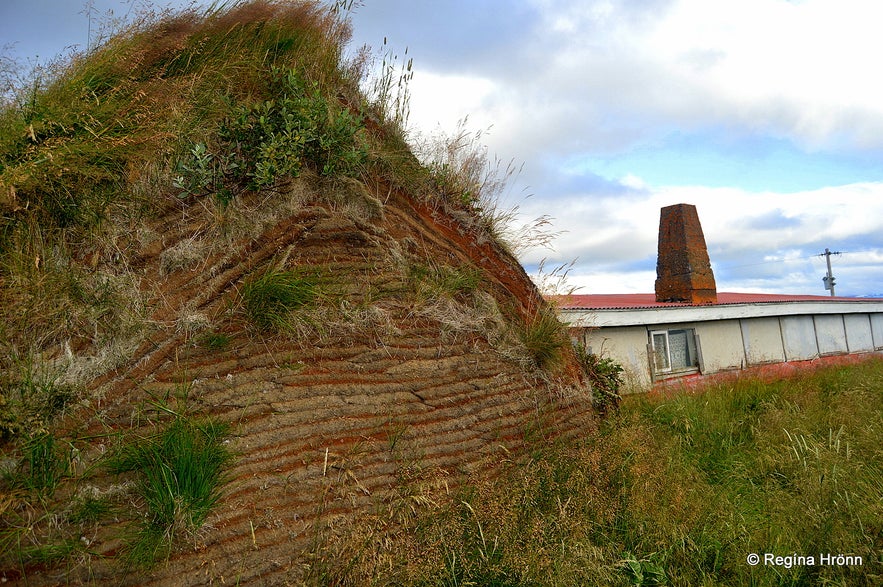
Galtastaðir-fram and the house beside it
On the estate of the brothers, there was a ridge, Tunguás, where there was good grazing. All of the brothers owned their part in the ridge.
Galti wanted to own the whole ridge, but his brothers, Geiri and Nefbjörn, were opposed to that. Finally, they agreed on fighting over the ownership of the ridge.
They were to meet by a creek that runs between Galtastaðir and the other farms beneath Galtastaðir.
 Galtastaðir-fram
Galtastaðir-fram
There are no accounts of the fight, but all of the brothers were killed and are buried on this spot.
Their mother is buried there as well, as it was her wish to be buried with her sons after her death.
Her grave (dys) and the graves of her sons, Geiri and Nefbjörn, are east of the creek, but Galti's grave is north of the creek, as after he had been fatally wounded he jumped over a wide pit in the creek. He did so as he wanted to die on his own land.
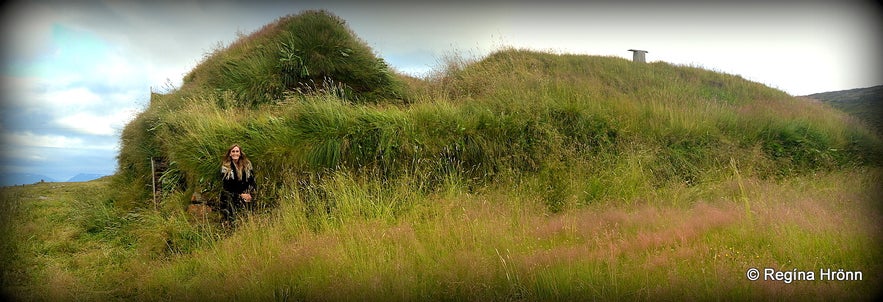
At Galtastaðir-fram
Another account exists, Dysjar við Haugalæk, of a man, who had started to dig in the grave (dys) of Galti, looking for valuables, and as he had dug for a while he fell asleep.
He felt a woman coming to him, saying: "It is of no use, my dear man, to dig here, as there is no money to be found, but in the green tussock by the large pit, there is gold".
The man woke up, stopped digging and nobody has seen the tussock since then.
The graves can still be seen. The creek's name is Haugalækur creek".
(Translated into English from Þjóðsögur Jóns Árnasonar - the Collection of Folklore of Jón Árnason volume IV - pages 122-123).
 Galtastaðir-fram
Galtastaðir-fram
Galtastaðir-fram is located between the Jökulsá river in Dalur and Lagarfljót river. A dirt road leads to the farm, road no 927 off road 925.
It is located some 20 minutes away from Egilsstaðir, the capital city of East Iceland. But as I said earlier then it is still closed as far as I know.
Sænautasel turf house
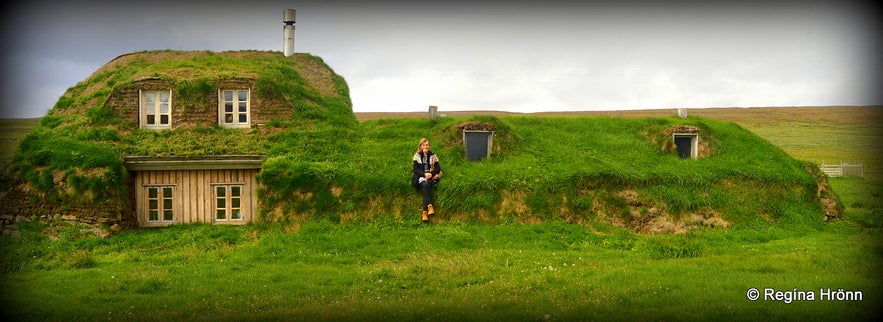 Sænautasel turf house in East Iceland
Sænautasel turf house in East Iceland
I have also written about a totally different rebuilt turf farm at Sænautasel on the Jökuldalsheiði heath, and shown you how poor people lived on the heaths of Iceland.
If you visit this area and see this lone turf house think about how many people lived here at one point in the 19th century. There were 16 turf houses on the heath and approx. 120 people lived in this area.
Many of these turf houses on the heath were destroyed in the Askja eruption back in 1875.
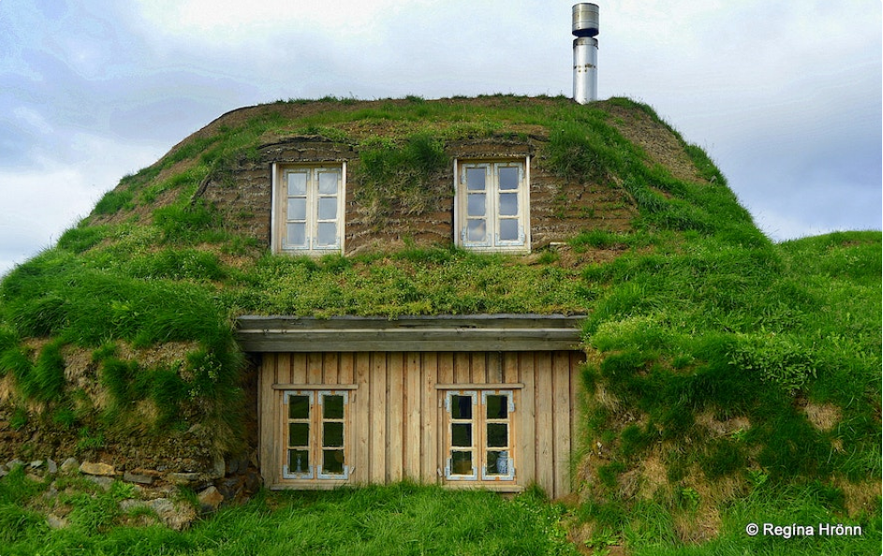
The original Sænautasel dates back to 1843, but it had to be evacuated along with many other turf houses in 1875. Five years later it was again inhabited and the last people moved out of it in 1943.
After Sænautasel was deserted it was not maintained, so it collapsed again until it was totally rebuilt back in 1992 (ref. Af jörðu, Íslensk torfhús, Hjörleifur Stefánsson).
Bear in mind that this is a heath in Iceland approx. 500 meters above sea level and it must have been very cold here in the wintertime.

Here is my travel-blog: Sænautasel turf house in the highland of Iceland.
That travel-blog is one of my most widely read travel-blogs as people find this turf house to be so cute, and I must say that I agree with them :)
Geirsstaðakirkja turf church
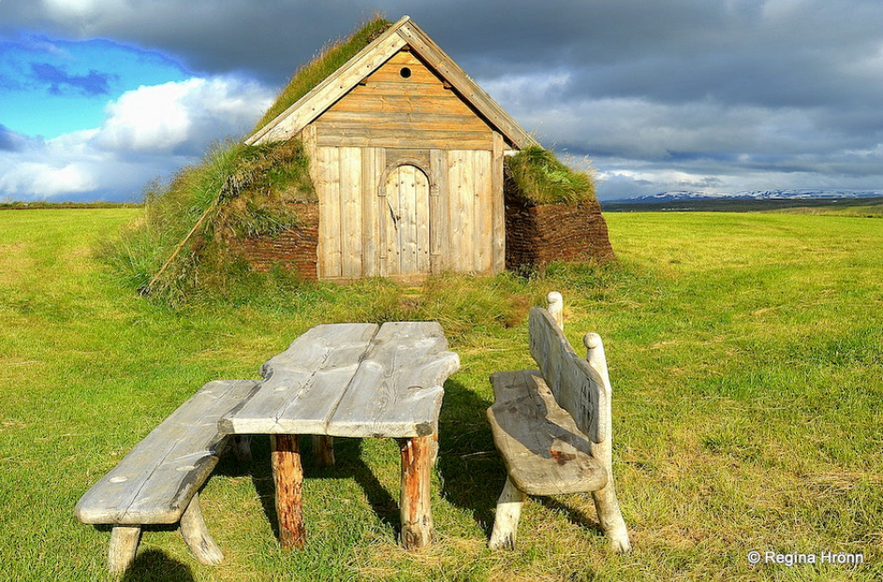
Also in East Iceland, in Hróarstunga on the land of Litli-Bakki is a replica of a 1000-year-old turf church called Geirsstaðakirkja church.
During an archaeological dig back in 1997 the ruins of a turf church were unearthed, along with a longhouse, and two other buildings.
The turf church might have been the farm church of Chieftain Hróar Tungugoði at Hof, whom you can read about in the Fljótsdæla saga. He was married to Arngunnur, the sister of Gunnar at Hlíðarendi from Njálssaga - the Saga of Burnt Njál.
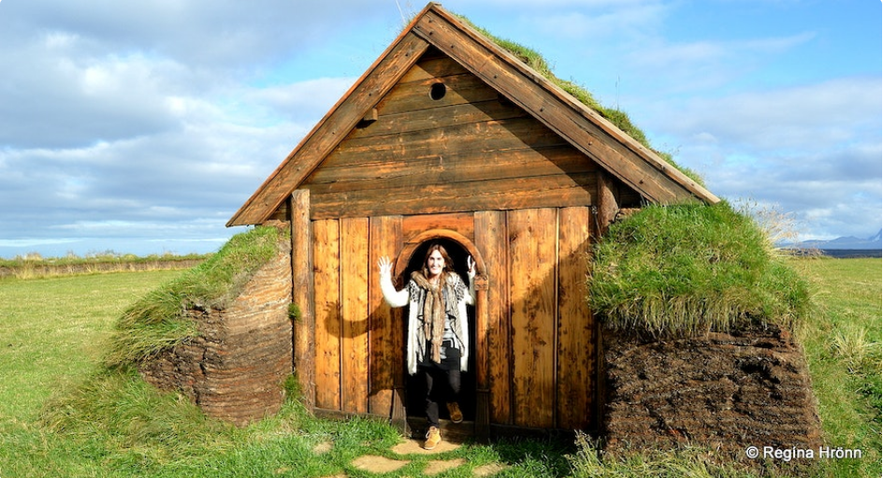
Here is my travel-blog about Geirsstaðakirkja: The beautiful Geirsstaðakirkja Turf Church in East Iceland - a Replica of an old Turf Church
Hjarðarhagi turf outhouses
 Hjarðarhagi turf outhouse
Hjarðarhagi turf outhouse
There are also a couple of reconstructed turf outhouses in East Iceland at Hjarðarhagi and Langhús.
I am so glad that these turf houses have been maintained. It is not an easy task as they need constant upkeep.
The 2 turf outhouses at Hjarðarhagi in Jökuldalur valley, Miðhús, and Efstahús, are the only ones remaining from a cluster of 7 outhouses that were in use until the 1970s. The other 5 were torn down when the new road was built.
 Inside Hjarðarhagi turf outhouse
Inside Hjarðarhagi turf outhouse
The walls are made of rocks and turf, with turf and brushwood in the ceiling. They were used as sheep barns.
Now, let's have a look at other amazing turf outhouses close by in Fljótsdalur valley which are still in use as sheep barns. They are called Langhús - the Longhouses.
Langhús turf outhouses
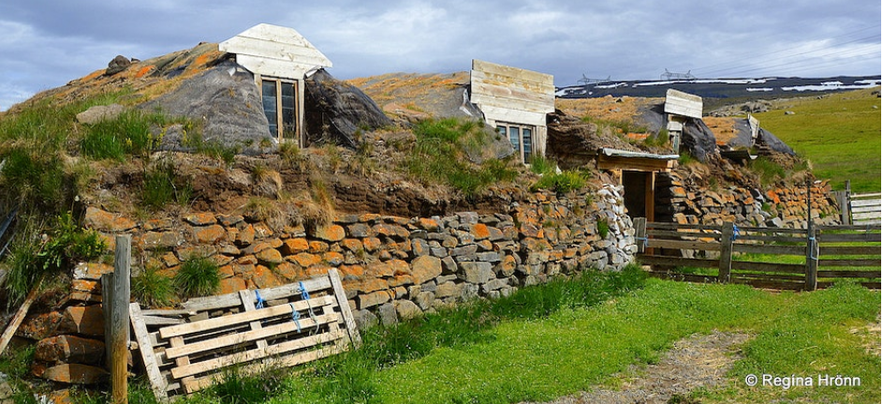
Nowhere in Iceland have I seen such huge and well-maintained turf outhouses, kudos to the farmers for a job well done maintaining these approx. 100 years old turf outhouses.
On the land of Langhús, l saw several other turf outhouses, apart from the big turf outhouses.
Unfortunately, the farmer was not at home so I could ask him to show me around, but I had a peek at the turf outhouses on my own. Aren't they amazing?
Many of the other turf outhouses in Fljótsdalur valley were demolished when the sheep disease scrapie (riða) infected the sheep and the whole stock of sheep had to be killed.
But Langhús was saved from demolition and I am grateful for that.
 Turf outhouses at Langhús
Turf outhouses at Langhús
These are the remaining turf houses in East Iceland that I know of, and you can see how different they are from one another.
Here we have a stately home that is now a museum, a home of the poor people of East Iceland, a reconstructed home of the people living on the heath, a hypothetical turf church that stood on this spot a thousand years ago, and well-maintained outhouses, one of which is still in use.
I also saw these beautifully reconstructed turf outhouses at Berufjörður farm, but at Berufjörður is a small museum called Nönnusafn, in the memory of Nanna Guðmundsdóttir, and a lovely old church. 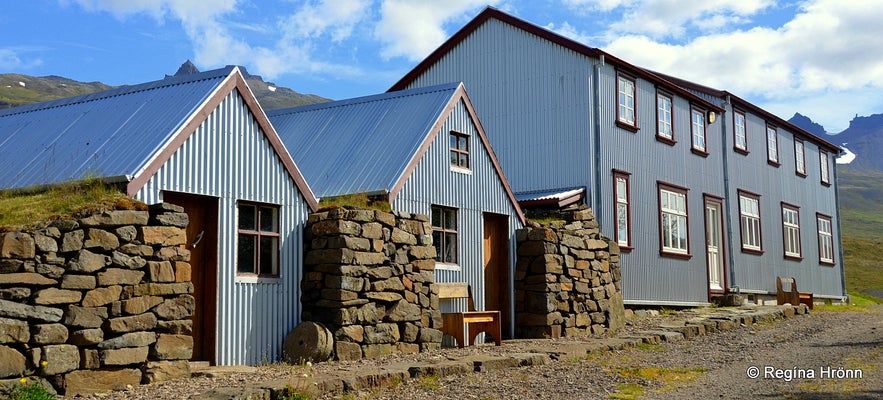 Reconstructed turf outhouses at Berufjörður farm
Reconstructed turf outhouses at Berufjörður farm
These turf houses add character to East Iceland and we are reminded of how once upon a time everybody in Iceland used to live in turf houses, big and small, depending on their role in Icelandic society.
Most of the remaining turf houses in Iceland are in the possession of Þjóðminjasafn Íslands - the National Museum of Iceland and several of them are open as a museum.
The following turf houses are open as a museum: Bustarfell turf house in East Iceland, Grenjaðarstaður turf house, Laufás turf house, and Glaumbær turf house in North Iceland, the turf house at Árbæjarsafn museum in Reykjavík, and Skógar museum and Keldur turf house in South Iceland.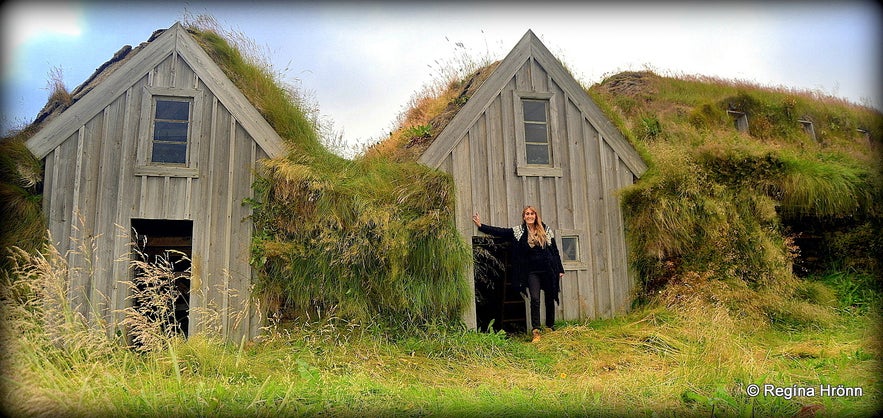 Galtastaðir-fram turf house
Galtastaðir-fram turf house
There are others that cannot be visited like Þverá turf house and Grænavatn turf house, but you can have a look at them from the outside.
And then there is the turf house at Tyrfingsstaðir at Kjálki where Fornverkaskólinn school teaches us how to build a turf house. That one can be visited as well.
I have written travel-blogs about all the abovementioned turf houses and a list of all the turf houses in Iceland (or at least those that I know of).
Have a lovely time in East Iceland, there is so much to see and do in this part of Iceland :)
Ref.:
Autres blogs susceptibles de vous intéresser
Mystérieuse Islande
Je me suis longtemps demandé pourquoi j’aimais tant cette île rocheuse et mystérieuse, souvent sombre, tempétueuse... secrète ! C’est peut-être justement pour cette raison – un lieu unique ayant toEn savoir plusPlongée à la faille de Silfra
En octobre dernier, j'ai eu la chance de tester une session snorkeling à Silfra en Islande ! Cette expérience était magnifique ! Je pense que c'est mon activité préférée avec la visite d'une grottEn savoir plusCe qu’on ne vous dit pas avant un voyage en Islande
Vous partez en voyage en Islande ? Vous avez sûrement déjà épluché les forums, guides et autres sites de voyage, réservé votre vol et organisé votre circuit ? Parfait, parfait. Mais avant de savourerEn savoir plus

Téléchargez la plus grande plateforme de voyage d'Islande sur votre téléphone pour gérer l'intégralité de votre voyage au même endroit
Scannez ce code QR avec l'appareil photo de votre téléphone, et cliquez sur le lien apparaissant pour avoir la plus grande plateforme de voyage d'Islande à portée de main. Ajoutez votre numéro de téléphone ou votre adresse e-mail pour recevoir un SMS ou un e-mail avec le lien de téléchargement.
